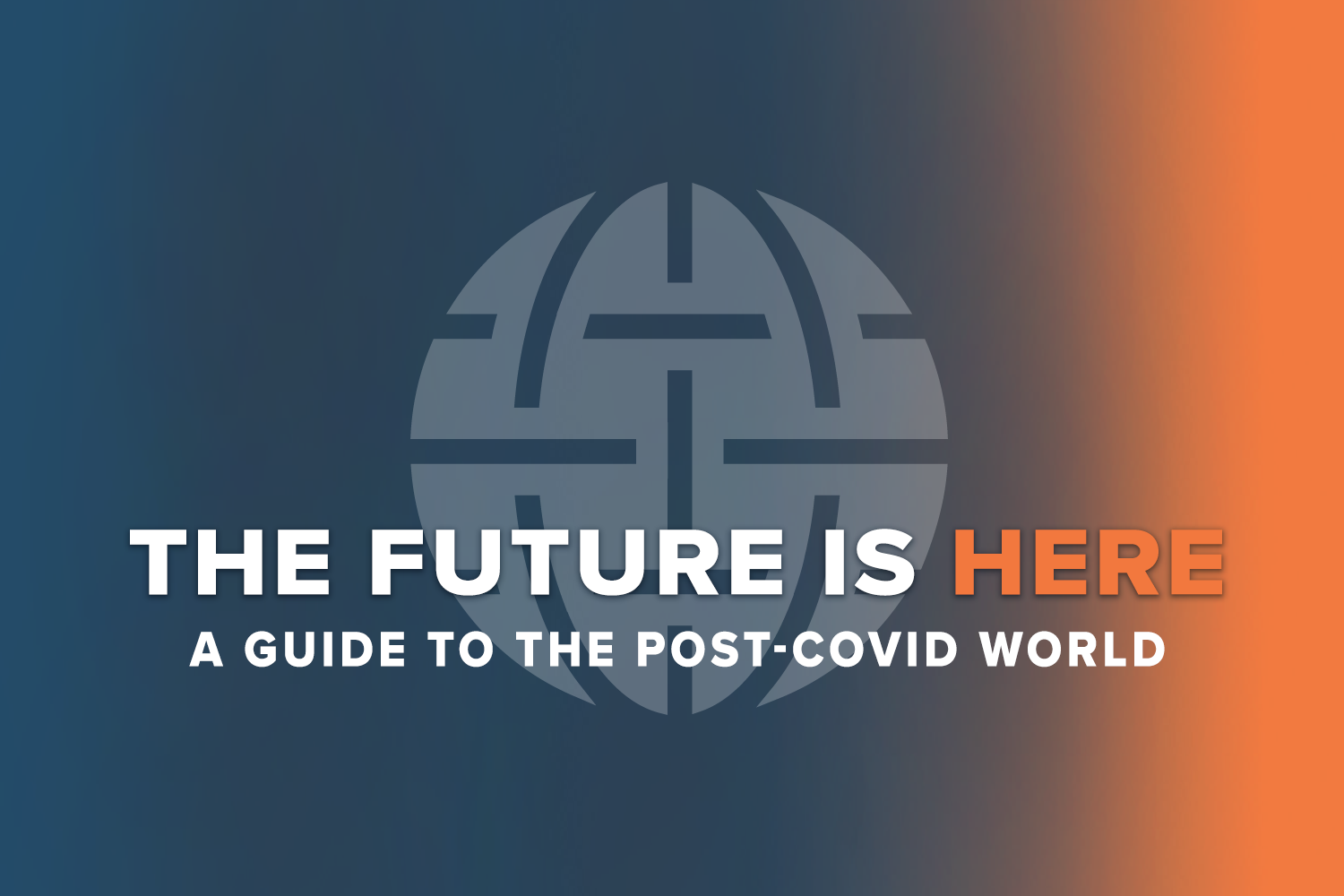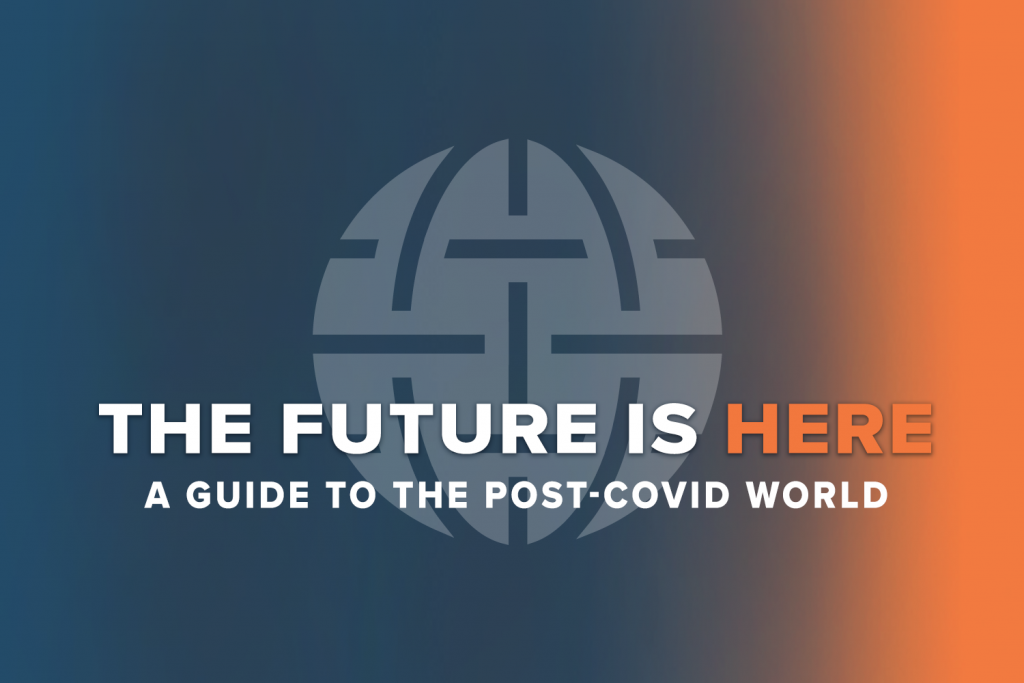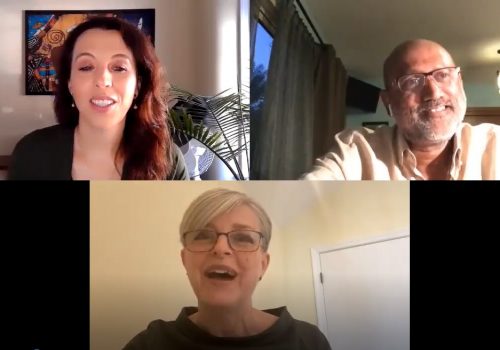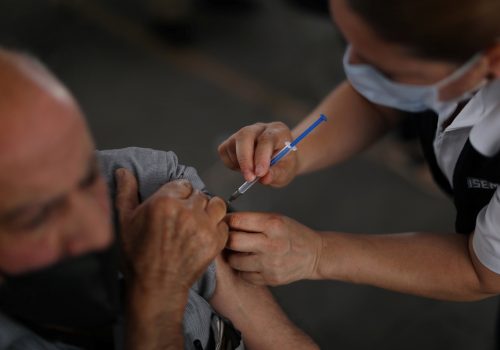The future is here: A guide to the post-COVID world 04/02/2021
Welcome to your guide to where the world is headed during the pandemic era and beyond. Each week, we’ll bring you the latest and most significant expert insights and international news about how coronavirus is reshaping international affairs. To stay updated each week, sign up to the newsletter here.
Let’s take a spin around the globe, in seven minutes or less.
In top stories this week:
- Countries are using vaccines as diplomatic currency. Should the United States catch up?
- How to really tell that we’re at the finish line of the pandemic.
- The need for all countries to work together to end the pandemic and future disease outbreaks.
- But first…
The big story
This week’s key theme: COVID-19 and the Suez Canal saga are inspiring a supply-chain revamp
Not again. Last year, as coronavirus shook up supply chains around the world, toilet rolls were in the headlines as short supply and panic overbuying left supermarket shelves bare around the world. This year, the challenge was a ship stuck in the Suez Canal, and the issue was… toilet paper.
Suzano, the Brazilian company which supplies about one-third of the world’s hardwood pulp to make toilet paper, said that it had already been short of shipping capacity, and the Suez Canal problem made that worse.
Supply chain management, rarely the sexiest element in global business, has had a year in the spotlight, starting with COVID-19. “Highly indebted companies, working from lean inventory, supported by just-in-time supply chains and staffed by short-term contractors, have borne the brunt of the sudden blow,” wrote the Financial Times last year. The problems added to those caused by trade conflict between the United States and China.
Reshoring—bringing production closer to home and shortening supply chains—was already a focus of interest before COVID-19 and it’s definitely a key trend in our future. With the United States stung by both the pandemic and trade tensions with China, President Joe Biden issued an executive order on the subject earlier this year. In the order, the White House outlined that having resilient American supply chains will not only “rebuild domestic manufacturing capacity, maintain America’s competitive edge in research and development, and create well-paying jobs”; these supply chains will also “support small businesses, promote prosperity, advance the fight against climate change, and encourage economic growth in communities of color and economically distressed areas.” The political advantages are undeniable. And climate change will increase the pressure on firms to lower the miles their products travel.
Walmart, the world’s largest retailer, has already staked out the issue. “Over the next ten years, Walmart will spend an additional $350 billion on items made, grown or assembled in the U.S.,” it announced earlier this year, as part of its “American Lighthouses” project. That includes plastics, textiles, small electrical appliances, food processing tools, and pharmaceutical and medical supplies.
Yet despite the pressure on US-China ties, it seems unlikely that there will be a wholesale shift in production for US companies. Investment bank UBS analyzed the trends earlier this year and concluded that “The narrative of a hasty supply chain retreat from China looks overdone,” in part because China has a lot of “embedded advantages” in its domestic production, and that means lower costs.
Instead, companies will likely focus on “China Plus One”—seeking another location, especially in Asia. “Unsurprisingly, Vietnam and India come out as [low-cost] winners,” said UBS. Biden’s executive order also suggests an alternative model, as it “highlights the importance of allied engagement—suggesting that supply chains can be secured not only through domestic US production but also by using foreign sources of supply in friendly countries,” wrote members of US law firm Wilmer Hale. So add “right-shoring” to your vocabulary.
But as Supply Chain Management Review points out, this is about more than where you put factories. “Concurrently, companies were grappling with higher e-commerce order volumes, an uncertain global tariff environment, a tumultuous political environment and stiff competition for both labor and warehousing space. To overcome these issues, supply chain managers more carefully pondered how their people, processes and technology converged to create effective supply chain networks.”
Focusing on supply chains means more than geography: it also means understanding and thinking about customers and demand. Last year, consumers suddenly wanted a lot more home deliveries and companies had to shift rapidly to accommodate that, for example. That made data—and systems that could quickly pivot on new information—even more valuable. It’s unlikely that there will be a wholesale reversal of global supply chains, in other words: But they will need to get smarter, shorter, and safer—or we will all need larger closets for stocking up on toilet paper.
Subscribe to The future is here: A guide to the post-COVID world
Sign up for a weekly roundup of top expert insights and international news about how coronavirus is reshaping international affairs.

The world in brief
Insights from across the planet, in ten bullets or fewer
- Is the pandemic coming to an end? “A year after the pandemic shut down the country, a growing number of infectious disease experts, epidemiologists, public health officials and others have started to entertain a notion that has long seemed out of reach: The worst of the pandemic may be over for the United States,” reports NPR. So far so good.
- Not so fast. “What we’ve seen over the last week or so is a steady rise of cases,” says CDC Director Dr. Rochelle Walensky on Monday. “I so badly want to be done, I know you all so badly want to be done. We’re just almost there, but not quite yet. And so I’m asking you to just hold on a little longer, to get vaccinated when you can, so that all of those people that we all love will still be here when this pandemic ends.” The United States may even be at the beginning of a fourth wave in the pandemic.
- How to think about this: a piece in Statnews says, “The challenge might be recognizing what the ‘end’ looks like. Some experts might mark it when daily deaths fall below a certain threshold or when hospitals are no longer facing crushes of cases. But there won’t be a single moment, like jolting awake from a nightmare, and we won’t be finished for good with SARS-CoV-2, the virus that causes Covid-19.”
- The pattern is not the same everywhere. Look at Africa, for example. “The continent’s comparatively low number of reported cases has puzzled scientists and prompted many theories about its exceptionalism, from its young population to its countries’ rapid and aggressive lockdowns,” writes Scientific American. But it adds that research indicates “a significant underestimation of African countries’ COVID burden. Undercounting could increase the risk of the disease spreading widely, hinder vaccine rollout and uptake, and ultimately threaten global efforts to control the pandemic.”
- A new animated series highlights the need to take vaccines to all countries. The ONE Campaign drafted celebrities for its new animated content series “Pandemica” which aims to “raise awareness and explain the critical importance of getting vaccines to all countries as quickly as possible,” the organization says. “It’s an animated world full of creatures and critters living in a COVID-19 purgatory—illustrating the realities for people in low-income countries as they wait to receive the COVID-19 vaccine.”
- Stronger together. A group of national leaders called for worldwide action against future pandemics. “We believe that nations should work together towards a new international treaty for pandemic preparedness and response,” they said in a statement via the World Health Organization (WHO).
- How did it start? A new report from the WHO on the origins of the pandemic said that it was “extremely unlikely” that the virus proliferated “through a laboratory incident”—a polarizing conclusion. Skeptics think it came from a laboratory in China, and the debate isn’t likely to end any time soon.
- Best quote of the week: What is the state of the world after the saga of the Ever Given? The ever-smart Daniel Drezner says “The global economy is a lot of things in 2021, but fragile is not one of them. Over the past decade, global value chains have had to cope with a slow recovery from the 2008 financial crisis, a follow-on euro-zone crisis, Fukushima, the Arab Spring, Brexit, rising levels of economic and political migration, a wave of populist nationalism stretching from the United States to the Philippines, a Sino-American trade war and a global coronavirus pandemic. Many of these were predicted to be the end of global supply chains, and yet those darn networks keep persisting.”
The inside scoop
Insights from the Atlantic Council
Andrew Marshall is the Vice President of Communications for the Atlantic Council. He leads the Council’s media, digital, and editorial efforts, and coordinates the way the Council talks with its key communities.



